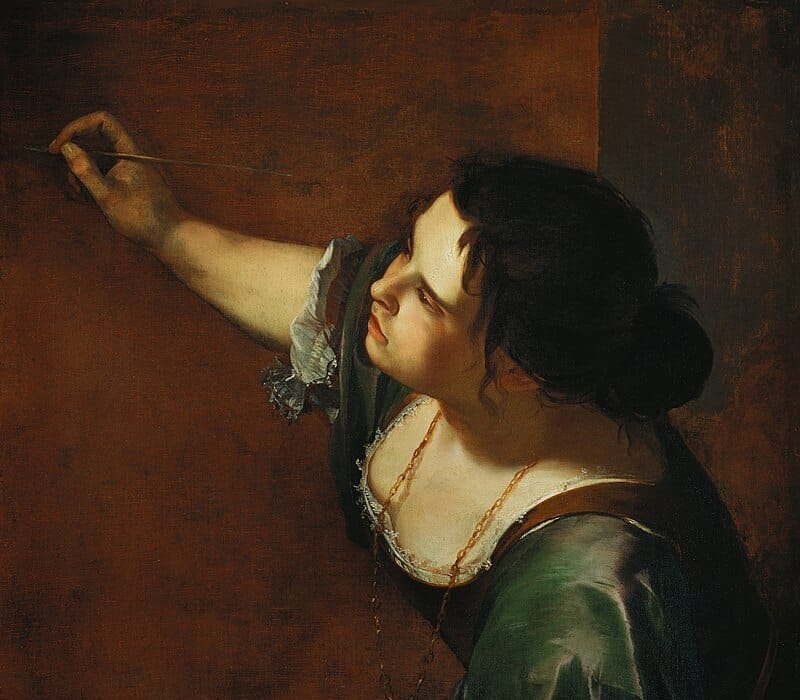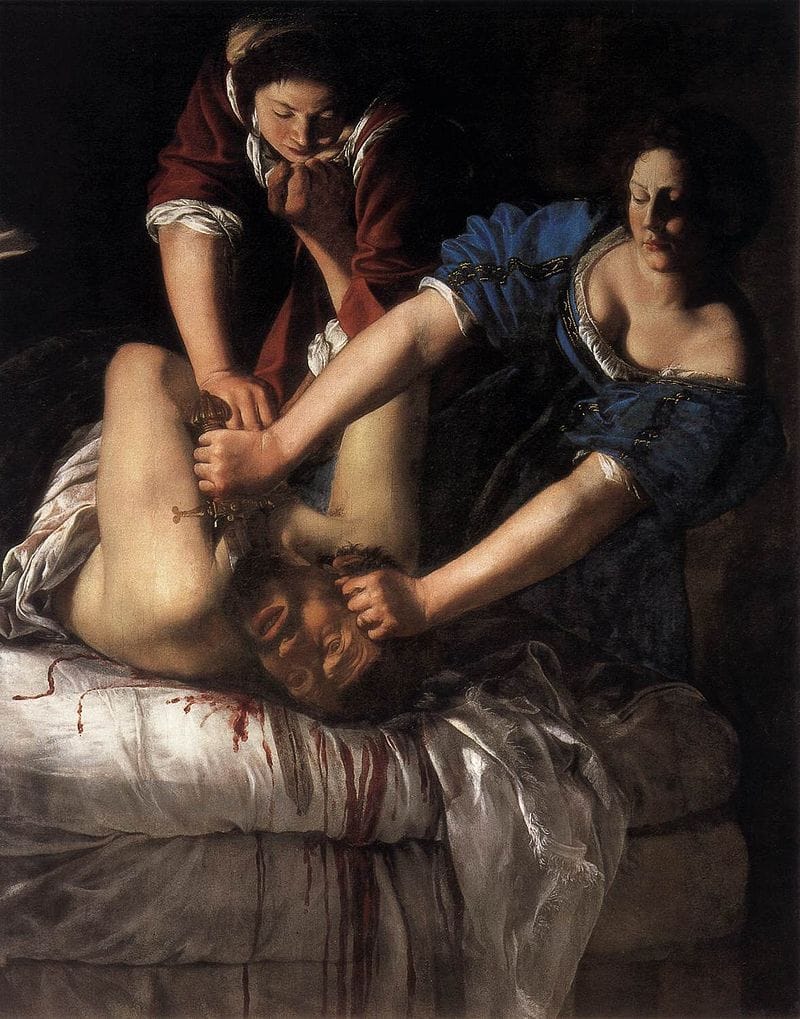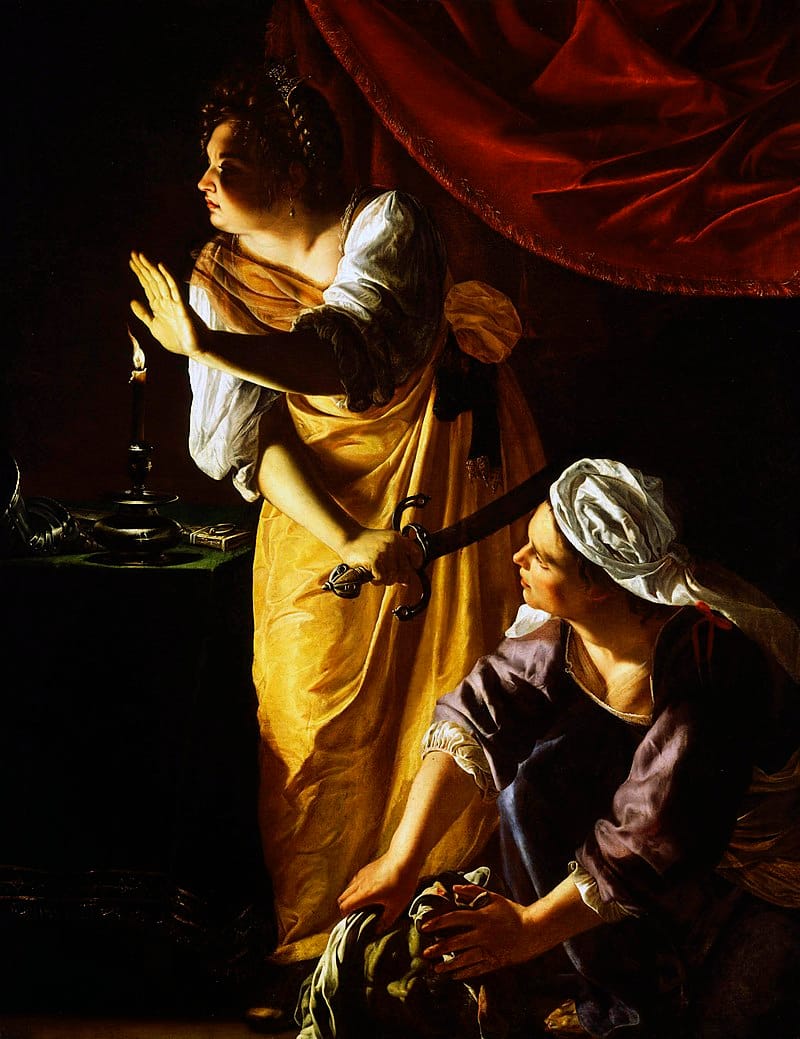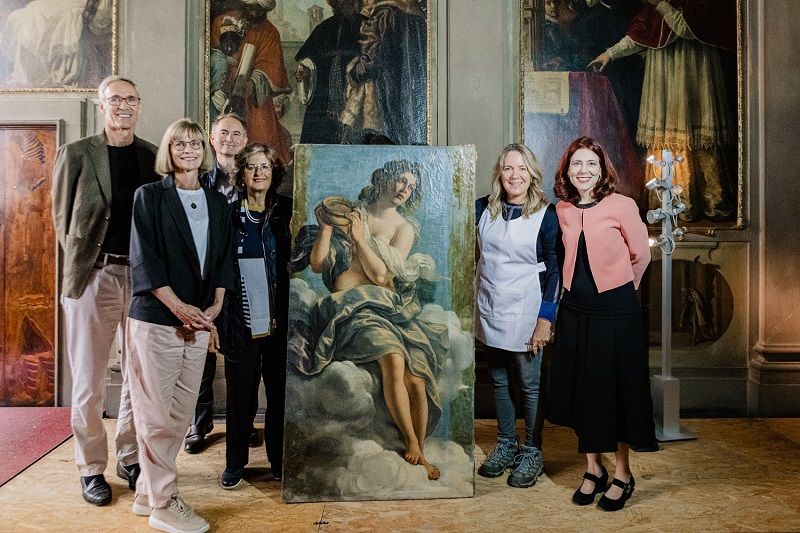Artemisia Gentileschi

Below, could this be feminist art critics chopping off the head of a patriarch perhaps?

Those women certainly look determined. Influenced by Caravaggio, Artemisia Gentileschi painted her version of Judith Beheading Holofernes and it has been the subject of much debate. In mid-1611, the 17-year-old Gentileschi may, or may not, have been raped by her tutor Agostino Tassi. Although Gentileschi was tortured to reveal what she knew and Tassi was put on trial, convicted and served a brief prison sentence, there is plenty of room for speculation. Certainly the trial transcripts support her side of the story.
Feminist art critics have argued that in this painting she is getting her revenge upon her abuser. It equally could be argued that the sex was consensual and that “Holofernes” here represents her father or the Roman authorities, an alternative view suggested in the 1997 French film, Artemisia. Whether Gentileschi was a victim, drawn thereafter to subjects of female pain and power, or she reshaped the events of 1611-12 and emerged stronger for it, we will never know. She painted a number of these Judith paintings. The picture shown above is a later (and better) version of Judith Beheading Holofernes that she completed in Florence, when she became the first female artist accepted into the Accademia delle Arti del Disegno (Academy of the Arts of Drawing). Below is a later version.

Many others (notably Caravaggio who strongly influenced her, and another woman painter Lavinia Fontana) had covered the subject in a very similar way and she had dealt with the issue of harassment in Susanna and the Elders in 1610. Like her contemporaries, she explored the popular themes of the day - Mary Magdalene, Cleopatra, The Rape of Lucrece and so on, in the decade that followed – safely tucked out of the way in Florence via an arranged marriage.
The superb picture up top is Self-portrait as the Allegory of Painting, from the 1630s, by which time she was living in Naples (minus a husband). A fascinating figure, she was a close friend of Galileo and she managed to attract men for most of her life, for better or worse, which is, of course, one reason why her strange tale is so interesting. Compare: the courtesan Ninon de Lenclos, who would be born in 1620 and Rubens, a contemporary.

Interestingly, the Gentileschi painting displayed above, which is in Michelangelo's house and titled Allegory of Inclination (1616), has been restored recently (2023-2024) to what was originally a nude. One of Michelangelo's prudish relatives insisted the nude be clothed as you see here; I expect that is about to change.
